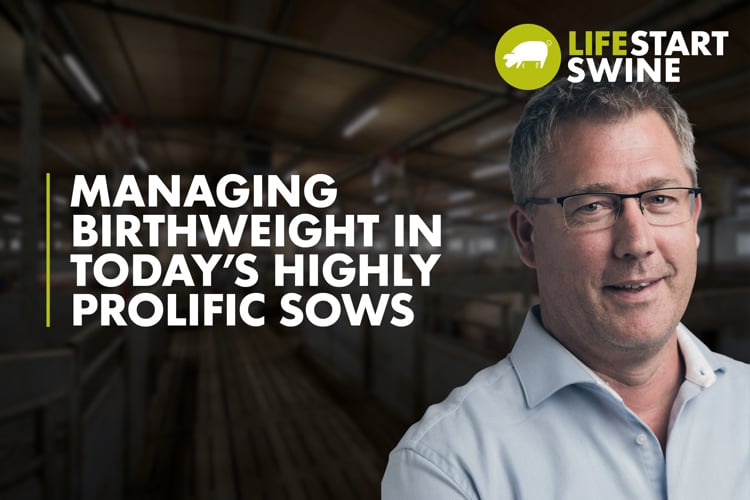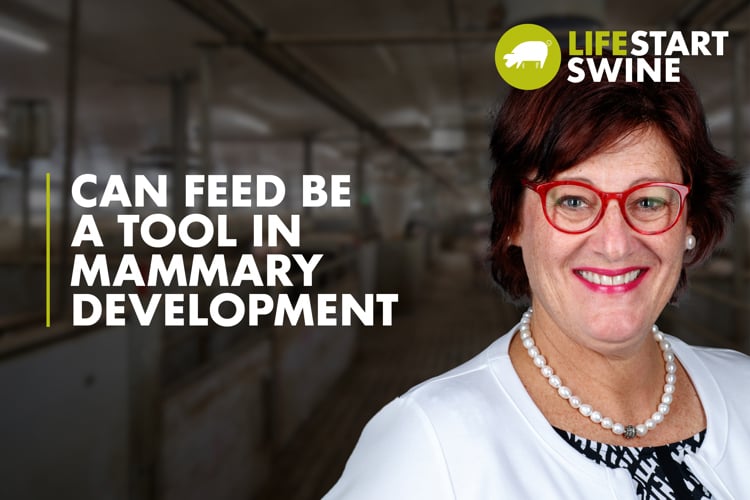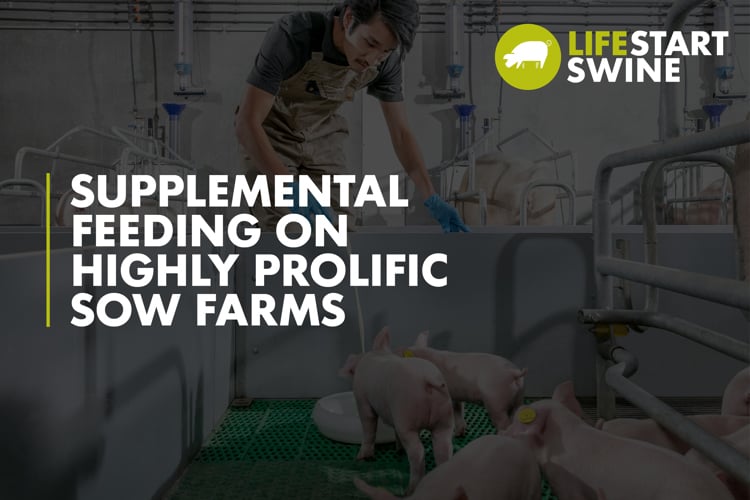
- 2022
- LACTATION
Litter size continues to increase, and while sow milk production has increased, it’s not been at the same rate to accommodate the growing litter size. So how can we manage sows to enhance mammary development? In an interview with Dr. Chantal Farmer, research scientist with Agriculture and AgriFood Canada based at the Sherbrooke R&D Center in Quebec, Canada, she discusses the stages of mammary development, factors influencing development and the role feed plays in mammary development.

Why is mammary development important?
“The more mammary cells that synthesize milk that are present at the beginning of lactation, the greater the amount of milk that can be produced by the sow,” said Dr. Farmer. “Mammary development is important because it's related to optimal milk yield of the sow. It’s not possible to increase something that is not happening, so if there is zero mammary development, it’s not possible to stimulate it.”
Thus, it’s critical to understand when the three stages of rapid mammary development occur to try to stimulate development during those times.
Stage 1 - before puberty. From 90 days of age to puberty
Stage 2 - during the last third of gestation - day 90 of gestation up to farrowing (day 114)
Stage 3 - throughout lactation, when the mammary gland is being suckled by the piglets
“As a nutritionist or a producer, you want to already have the maximum number of cells at the beginning of lactation,” she said. “So, I'm most interested in what happens before lactation in terms of mammary development to make sure it's optimal when the sow is actually farrowing.”
Factors influencing mammary development
There are several key factors that influence mammary development:
Hormonal status. Prolactin is essential for mammary development. If you get rid of prolactin in the period of rapid mammary development at the end of gestation, there will not be any mammary development. If you give prolactin on top of what is normally present in the circulation, it will stimulate mammary development. Estrogens are important in the prepubertal animal. If you give extra estrogens in the feed through phytoestrogens, it will stimulate mammary development. IGF1 is a growth factor that can be increased with nutrition. In Farmer’s studies by increasing IGF1 with injections of somatotropin, it will stimulate mammary development at the end of gestation.
Nutrition. A 20% feed restriction in the prepubertal animal, between days 90 to puberty, will inhibit mammary development. A feed restriction that is less than 20% did not have a significant impact on future milk yield. Also, if you give too much energy during gestation and the animal becomes obese, there’s a negative impact on mammary development. In terms of body condition, the optimum level of back fat is between 17 and 25 millimeters of back fat. The animal should not be thinner than 17 millimeters or obese with more than 26 millimeters as it will have a negative effect on mammary development. Also, in a recent study, Farmer has increased the amount of lysine in the diet at the end of gestation, and it led to a great increase in the amount of milk synthesizing cells in the mammary gland.
Management. If a teat is not suckled at all in the first lactation, in the next lactation, the piglet that will suckle that teat will weigh 1.12 kilograms less on day 56. So, the teat needs to be used in the first parity to produce enough milk in the second parity. This research begged the question of how long a teat must be used in first parity, and the answer is two days. For example, if you have a primiparous animal that is very thin and has a very large litter size, you could move some of her piglets to give her a chance to have a good body condition and be in the herd longer, but you need to wait to move the piglets until day three of lactation if farrowing is on day one.
How can feed be a tool in mammary development?
A key impact is a sow’s body condition. Keep a close eye on back fat and measure the thickness of these animals, because if below 17 millimeters, there's a drastic decrease in terms of mammary development.
“Over the whole gestation, the amount of feed is important, you want to make sure that you don't give too much energy but restricting feed can also have a negative impact,” she said. “It’s important to find the right balance to achieve the optimal body condition.”
Dr. Farmer said to stay tuned regarding increased lysine use as her research continues. She’s confident that lysine will be a useful tool in mammary development.
“Keep appraised of the research I'll be doing because what I believe will come is that we need to increase lysine. We’ll go through phase feeding where at 90 days of age, the animals should receive more lysine than before 90 days of age,” she noted. “Next, there will be studies to look at different feed types that can stimulate concentrations of the growth factor IGF1.That's something else as of day 90, that could be included in the feeding program to increase the concentrations of IGF1.”



